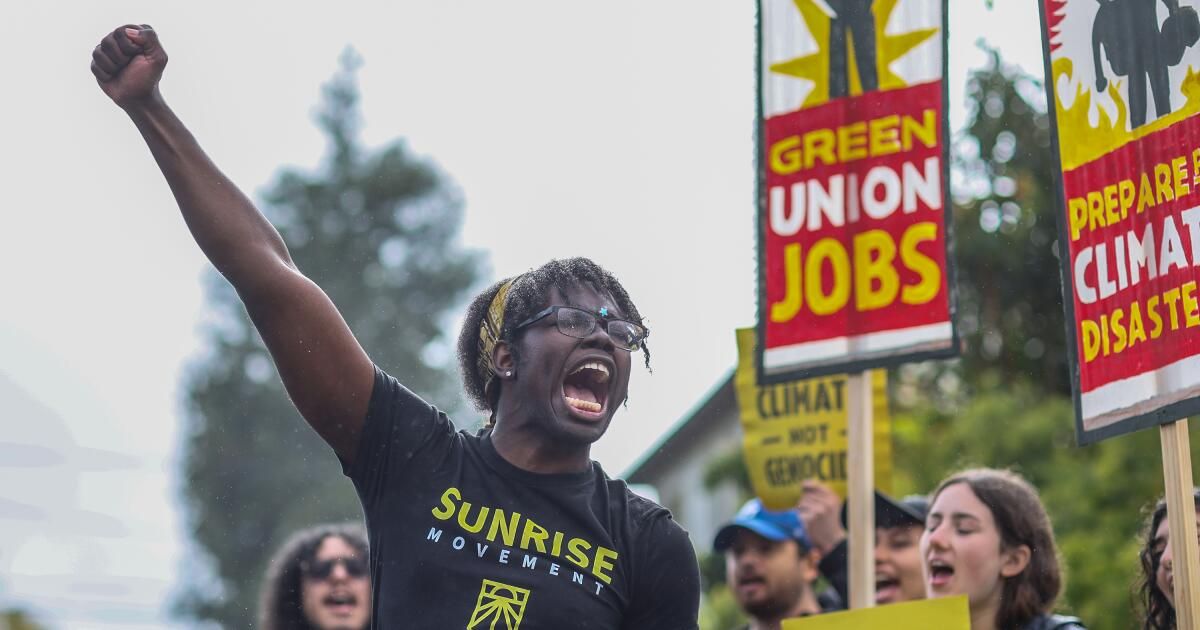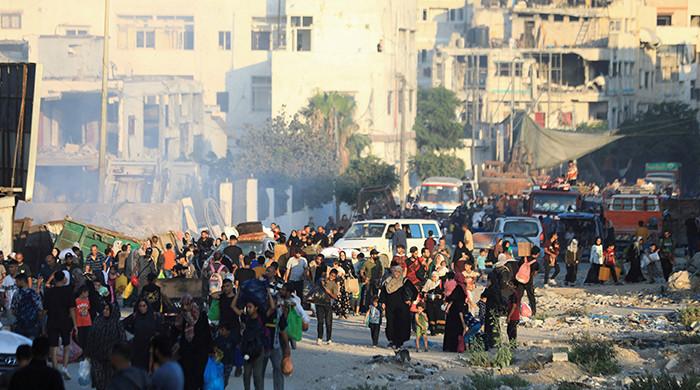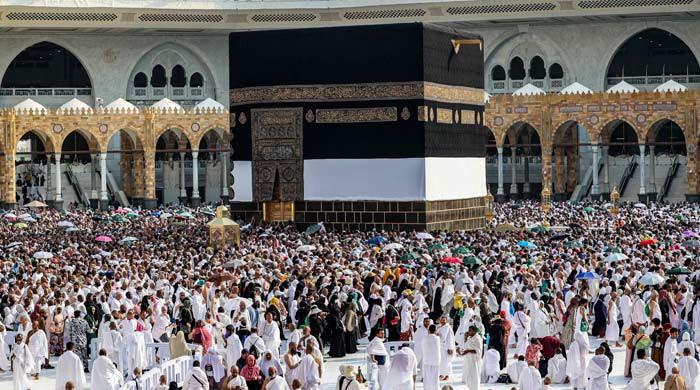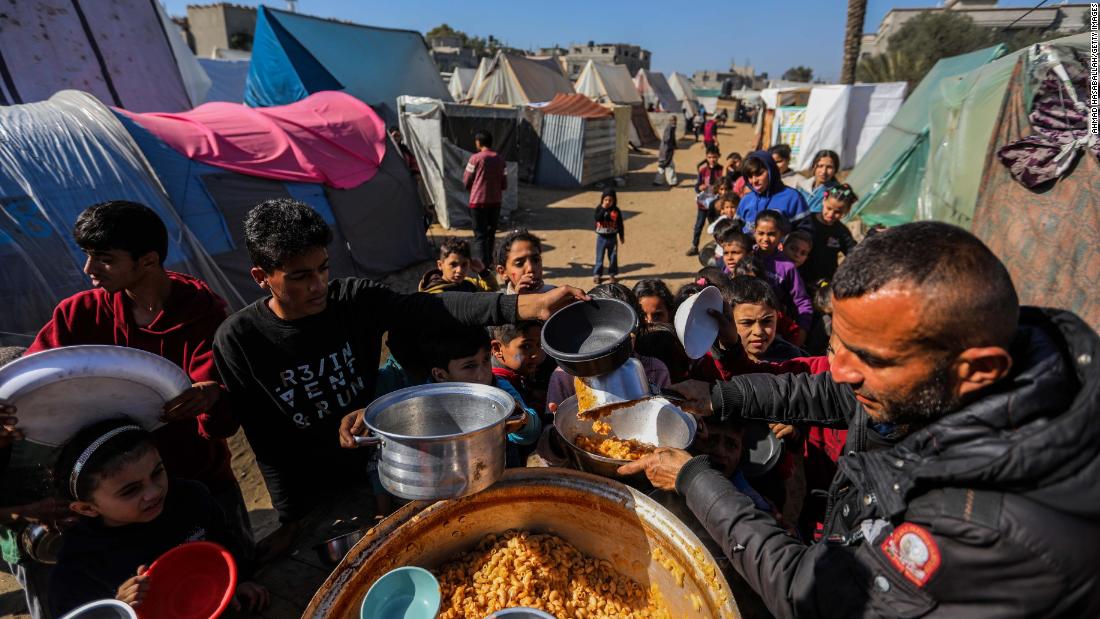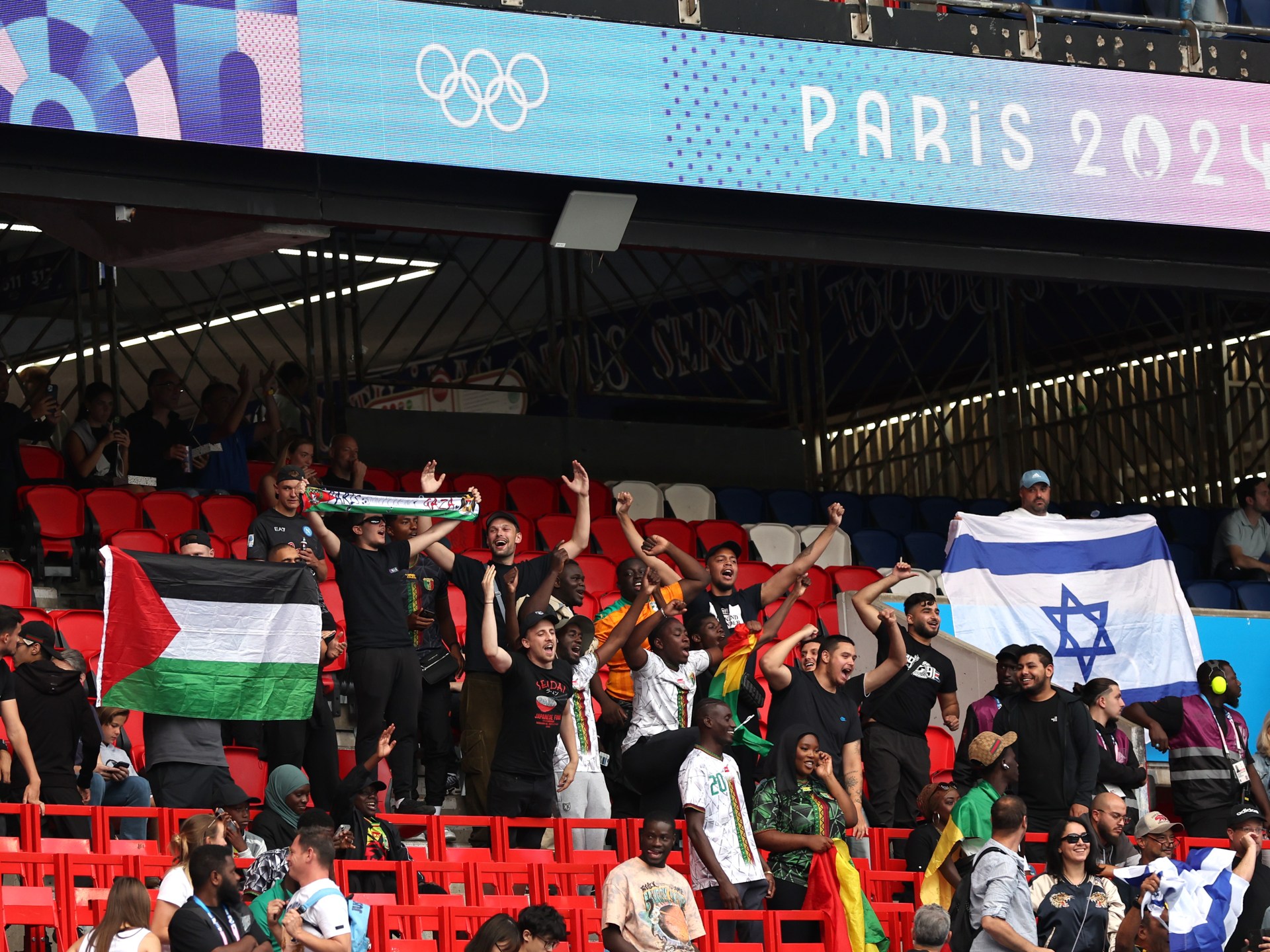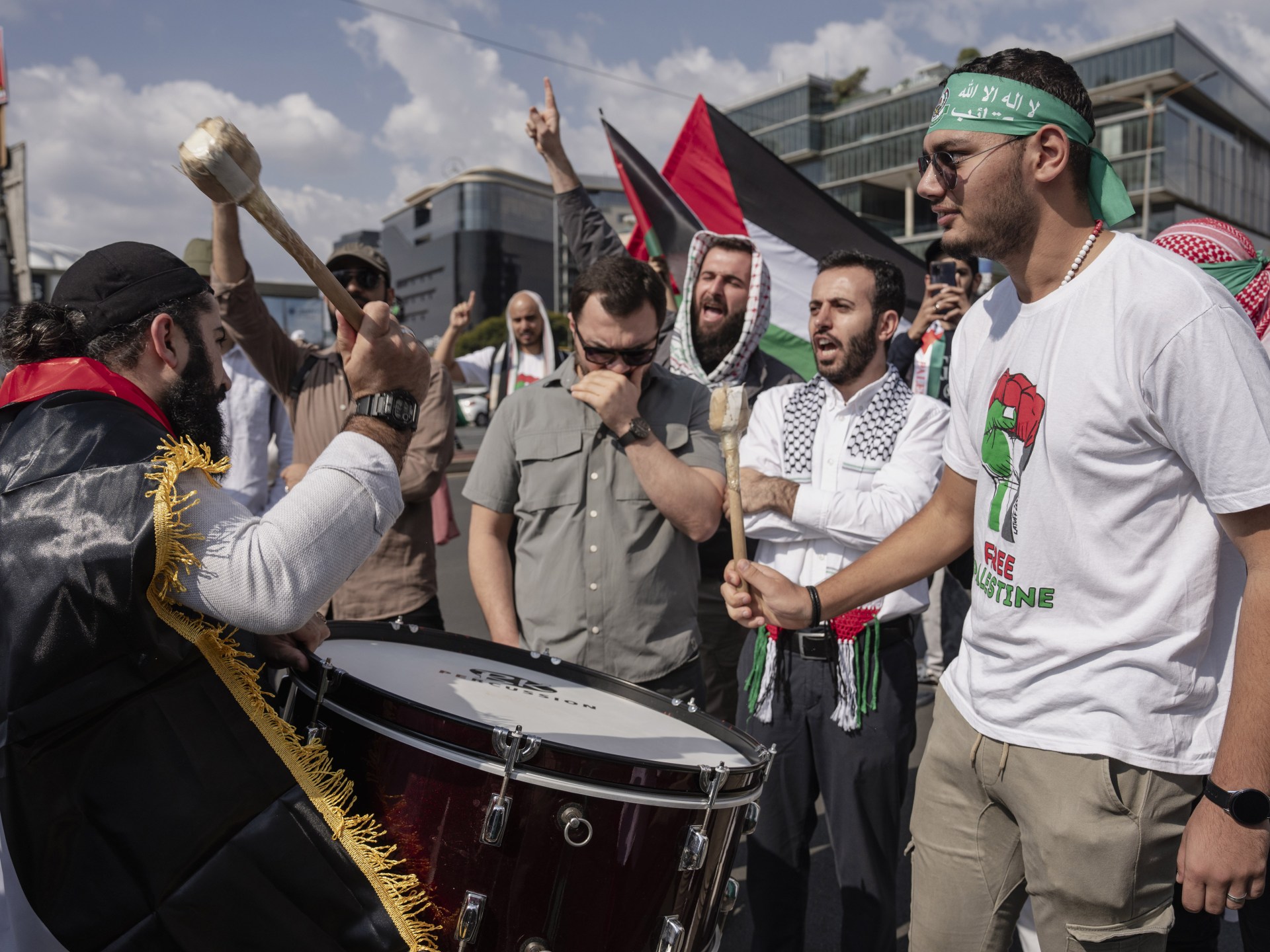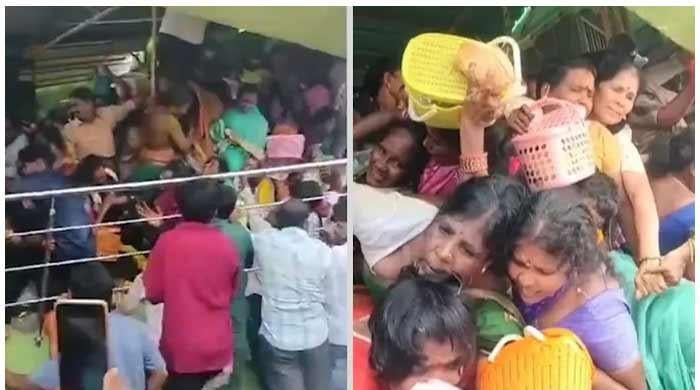Aru Shiney-Ajay became aware of the climate crisis when she was a teenager. When she visited her family in India, she watched in horror as her loved ones suffered one disaster after another: deadly floods in his parents' home state of Kerala, and that breaks records Air pollution in Delhi among them.

Aru Shiney-Ajay is arrested along with other members of the Sunrise Movement while protesting in July outside the Washington office of Ohio Senator JD Vance, who has since become the Republican vice presidential nominee.
(Andrew Harnik/Getty Images)
“The climate crisis wasn’t just something that was in the background, it was something that was already there,” she said. “That’s what really drove me to get involved in Sunrise.”
The Sunrise Movement was founded in 2017 by young climate activists frustrated by the mismatch between an accelerating global disaster and the slow pace of existing environmental organizing.
Theirs would be different: a movement organized by and for young people that would not be afraid to confront powerful figures directly and dramatically.
They burst onto the national scene just a year later, when some 150 members… They organized a sit-in in the office of incoming House Speaker Nancy Pelosi (D-San Francisco) to demand that the newly elected Democratic majority commit to a Green New Deal.
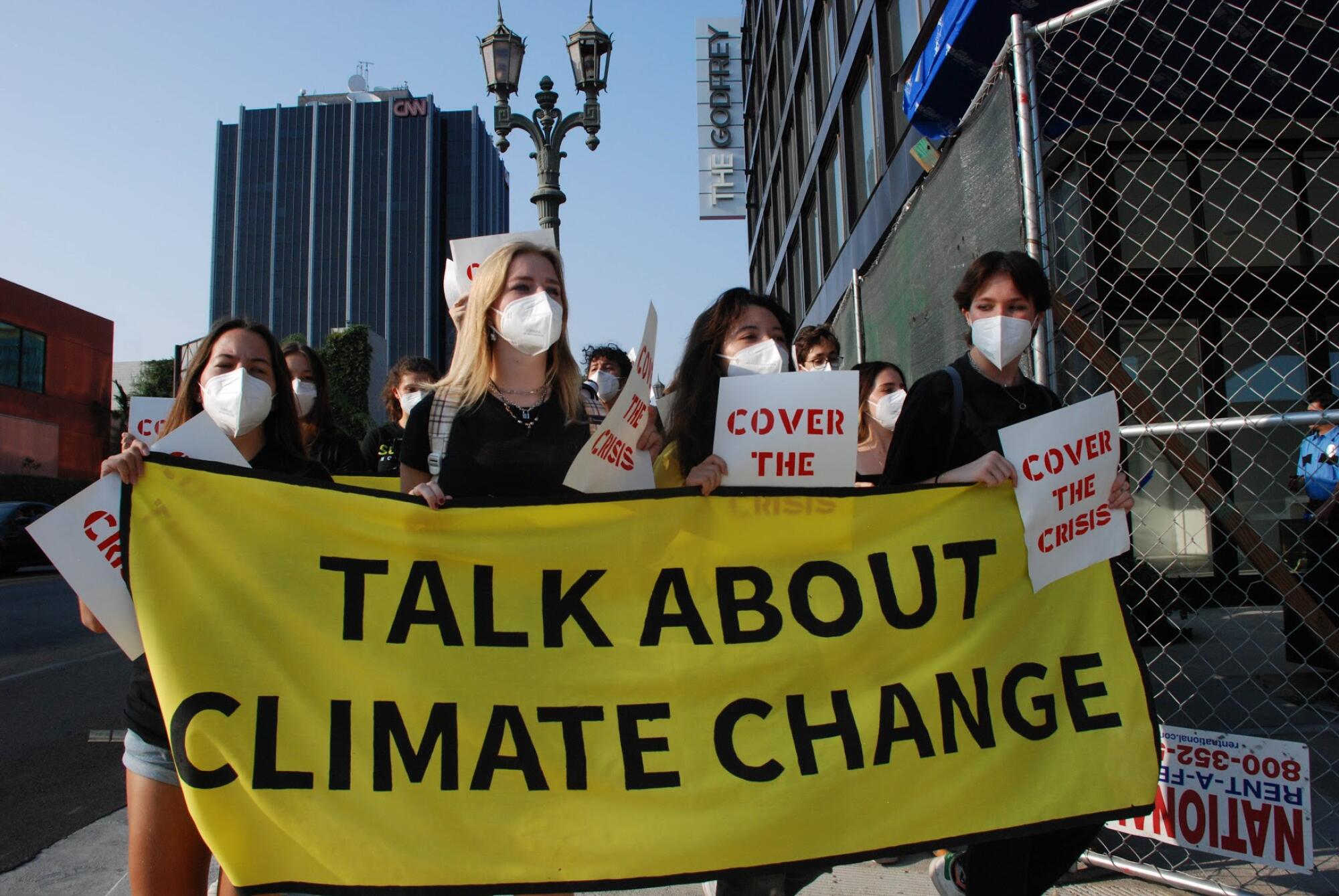
In September 2020, members of Sunrise LA Youth protested at CNN’s Los Angeles office to “demand that they connect the climate crisis to wildfires, to hurricanes.”
(Dawn Movement)
Shiney-Ajay, then a student and volunteer trainer at Swarthmore College, had helped coordinate the action at the Capitol, which received a lot of press coverage. After its success, she made the decision to leave college and work for Sunrise full-time.
Last October, after months of searching and a 95% confirmation vote From Sunrise's volunteer delegates, Shiney-Ajay was appointed as the organization's executive director.
She is only the second person to lead the organization, which is based in Washington, D.C., and has thousands of members in 118 centers in cities, towns and campuses across the United States. There are 15 centers in California alone.
“She is one of the most intelligent and compassionate leaders I have ever met,” said founding director Varshini Prakash in a statement last year. “I am confident that under his leadership, Sunrise will reach new heights.”
Shiney-Ajay, 26, has taken over the leadership role at a fraught moment in American politics. While the Democratic ticket of Vice President Kamala Harris and Minnesota Gov. Tim Walz has energized young progressive voters who were deeply skeptical of both President Biden and former President Trump, the outcome of the November election remains uncertain. Protests over violence in Gaza and Israel have electrified college campuses. Meanwhile, temperatures are soaring and acres of land are burning, and the time left to save a sweltering planet appears to be approaching zero.
The Times spoke with Shiney-Ajay this summer. The conversation has been edited for brevity and clarity.

How does it feel to lead Sunrise after having come up as a volunteer?
I feel like I can live my purpose in life. I've found great meaning and energy in facing some of the greatest crises humanity has ever seen, and doing so with hope and determination, with people I trust by my side. Sunrise gave me that when I was a member, and I feel it's a privilege to be able to give that back to thousands of others.
What attracted you to Sunrise as a new member?
I have never seen an organization that is so visionary about what it takes to stop the climate crisis, and so serious about the power needed to do it.
They said, “Well, the way we’re going to do it is we’re going to push the Democratic Party to see the urgency of the climate crisis. We’re going to expose the corrupting influence of fossil fuel billionaires on our politics. We’re going to link the issue of good, green, unionized jobs to climate change, to make it clear that it’s not a choice between jobs and climate.”
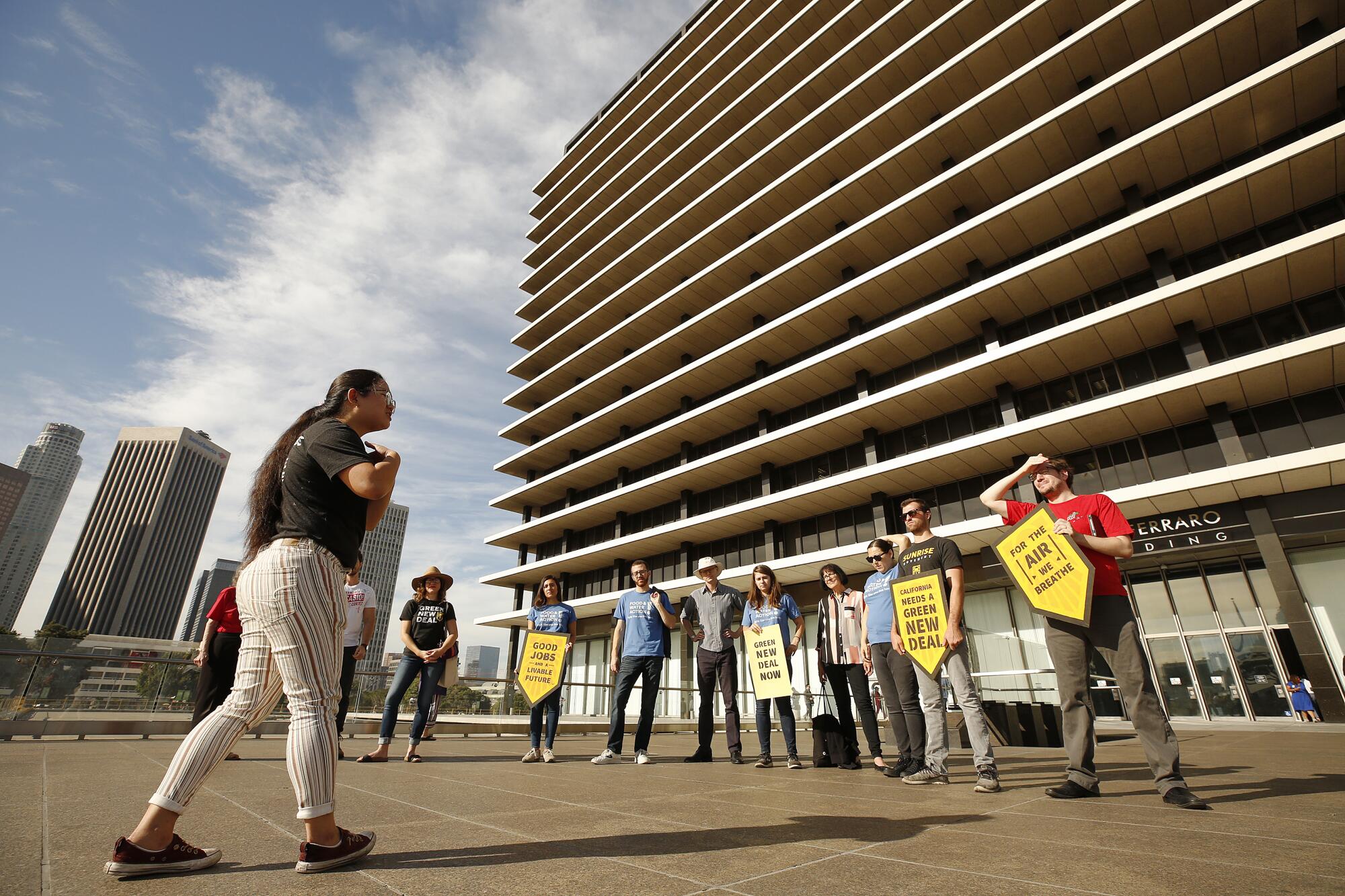
Lynn Wang of Sunrise Movement LA, left, addresses a coalition of environmental groups as they stage a protest at LADWP headquarters downtown in November 2019.
(Al Seib/Los Angeles Times)
These were really clear interventions that opened up a whole new field of possibilities.
What does Sunrise mean when it says it wants a Green New Deal?
The easiest way is to think of the New Deal, which was not just one bill but a series of bills, executive actions, and local decisions that occurred over a number of years. [during the Great Depression]. It changed the legislative landscape as well as the economic and cultural landscape of society.
That's what we need to stop the climate crisis: legislation at all levels of government and changes across all sectors of society. That's what the Green New Deal is all about.
What era is Sunrise in right now? What are your priorities at the moment?
After [Congress passed] The Inflation Reduction ActWe decided it was time to take some of those wins and start accumulating them locally. That's how we launched the New Green Deal for Schools and the New Green Deal for Communities.
It was a way to win locally, but also to develop our leaders and build our base. We have been doing that for the last two years.
No matter what happens with the elections this year, we are really preparing to take the fight back to the federal level. We are starting to do that this year with the Climate emergency campaign.
What's that?
This is a campaign to get President Biden to declare a climate emergency, which basically unleashes a lot of executive powers. We're facing record temperatures, floods, wildfires, hurricanes. This is a state of emergency, and we need to use the full power of the federal government to do everything we can to stop it.
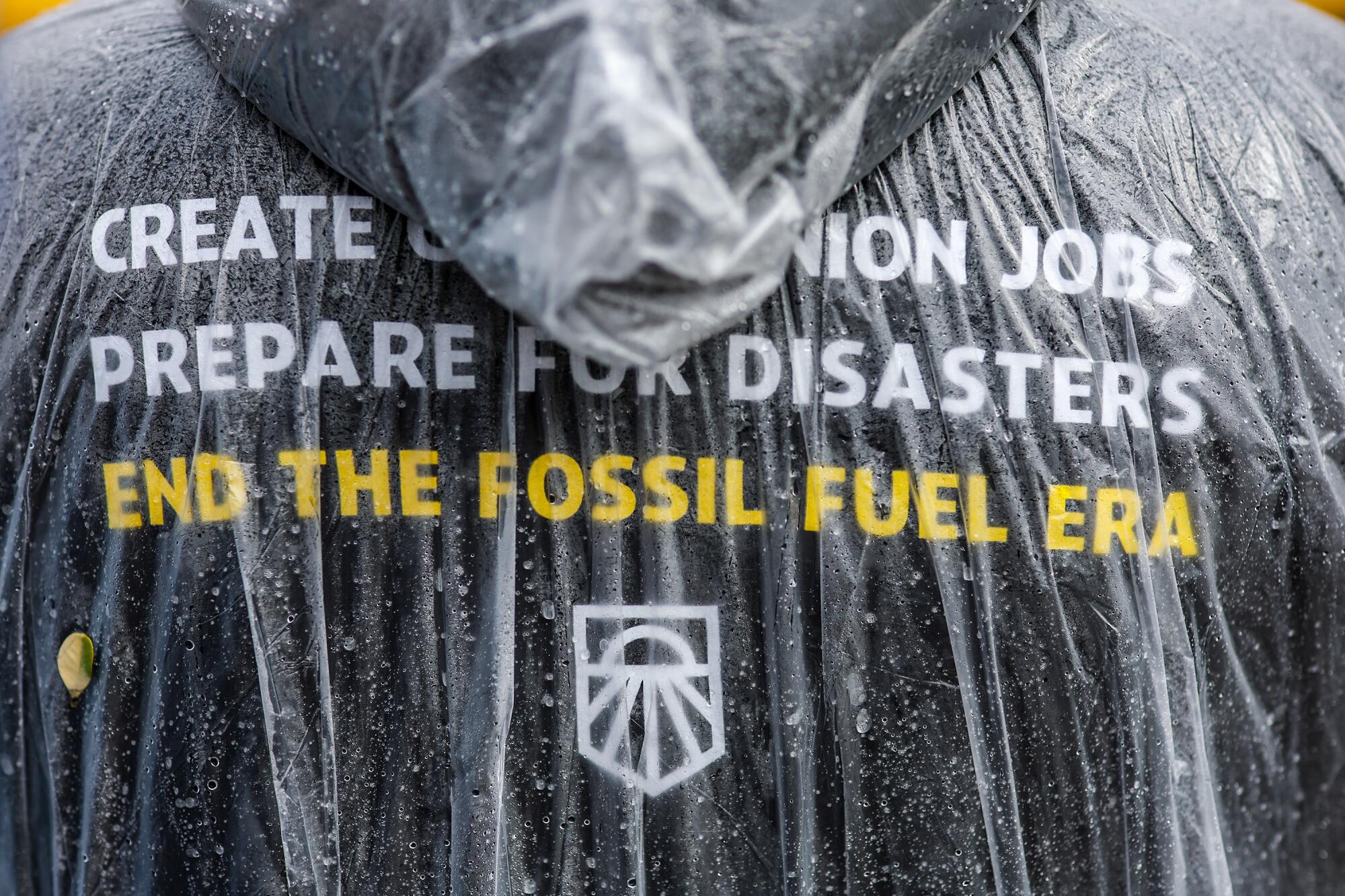
A Sunrise Movement protester outside Kamala Harris's Brentwood home in April.
(Robert Gauthier/Los Angeles Times)
What don't people understand about your organization and the people you represent?
What we're asking for is not unreasonable or impractical. It's what most closely fits the physical realities of the world. As you get older, I think you start to think within the bounds of political imagination, rather than within the bounds of what literally needs to be done to keep millions of people alive.
Sometimes people think the Green New Deal is idealistic or impractical. In fact, I think it's the politicians who are being impractical in relation to the reality of our situation.
Sunrise is specifically aimed at young people. Do members have to pack up and leave once they turn 35?
As long as young people are at the forefront, we appreciate all the help we can get. There have been many people over 35 at the centres who help us manage the logistics of the training or give us their wisdom on how to plan actions or pass laws in their city.
What does this generation understand that previous generations did not?
This generation grew up hearing about the effects of the climate crisis since they were in elementary school, so we know that it is an existential threat.
I also think that this generation is very justice- and equality-oriented. And we are not single-issue voters, as was thought 15 or 20 years ago.
When we spoke earlier this year, before President Biden dropped out of the race, you said your members were deeply disheartened by the prospect of a Biden-Trump rematch. What is your stance on the election now?
Donald Trump is an existential threat to democracy and to our climate. Losing four more years to a president who actively promises to drill more fossil fuel wells would be planetary suicide. That’s why Sunrise will do everything it can to prevent him from being elected.
Vice President Harris’s track record on climate is far more promising. As California attorney general, she prosecuted oil and gas companies for pollution and sued the Obama administration over fracking. As vice president, she cast the deciding vote on the Inflation Reduction Act, the nation’s most significant climate legislation to date. With her in office, we truly have a chance to achieve bold legislation that can address the climate crisis.
What is your message to young voters?
Our generation can change the course of politics. When we protest, vote, and take to the streets in droves, we win climate legislation, a gun violence prevention office, student debt relief, and a cap on prescription drug prices. If we vote for Harris this November and then rally, protest, and demand the scale of legislation we need, we will win the world we deserve.
Why has Gaza become an important part of the Sunrise message?
We are a youth movement and the reality is that a lot of young people are protesting against the war in Gaza right now. We think it is important to understand that this is an electoral issue, along with the climate. The scale of death and destruction has been enormous and that has made it a major issue for many young people.
What are some of the most difficult decisions you feel you have to make as a leader?
When you pass a law, you always have to make a decision: how much to say, “That’s not good enough,” and how much to say, “I’m glad you did that.” It’s always a strategic calculation.
One of the strengths of young people is that we are able to demand the biggest and the boldest. But if you only demand the biggest and the boldest, sometimes it's hard to feel like you're winning, and people end up leaving because they feel like they've never won anything.
How have you evolved as an activist? Is there anything in the Aru of 2024 that might surprise the Aru of 2017?
I think I've gotten a lot better at being really disciplined about hope. It's easy to feel like everything is falling apart when you look at the world. Something that Sunrise has taught me, and that I've learned from the world around me, is that hope comes through collective action, but it's also something that has to be practiced. You don't even know what spark will ignite something. Just holding that hope within yourself can ignite it in other people.

